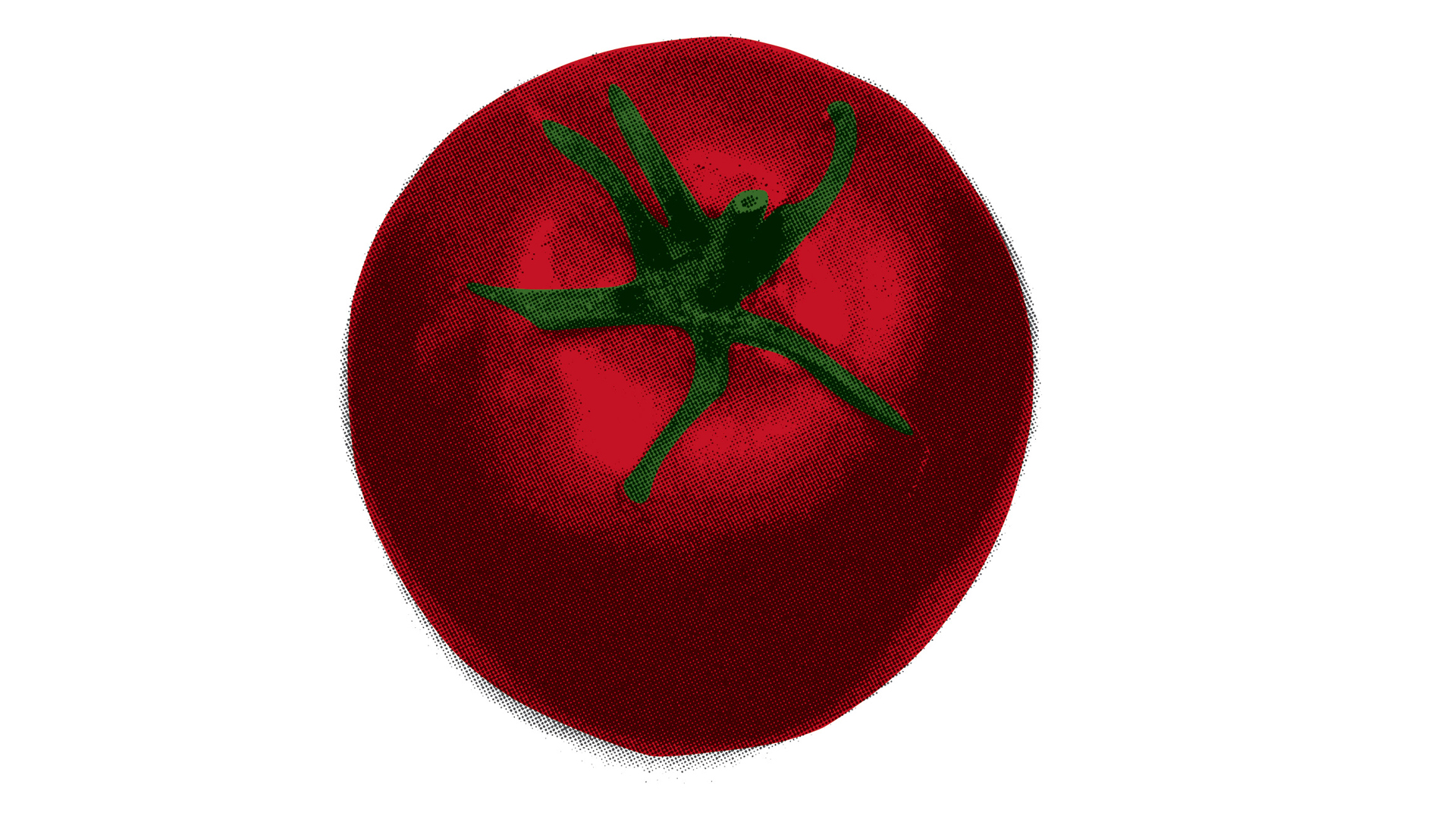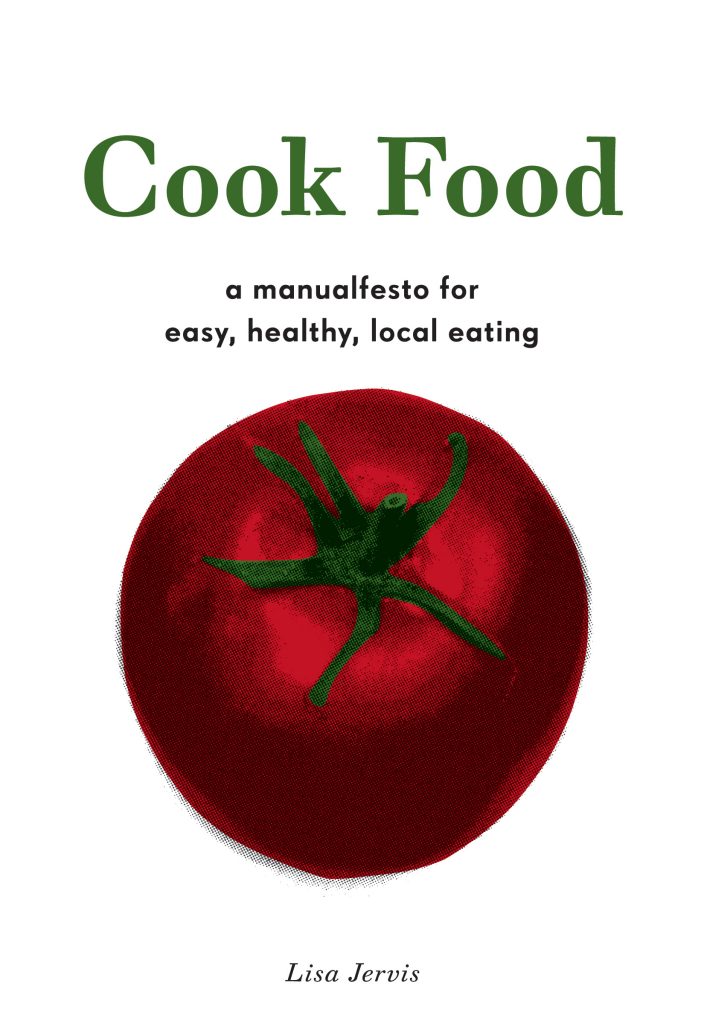A Manualfesto for Easy, Healthy, Local Eating
An obstacle people often face when trying to eat a healthy, green, reasonably priced diet is a lack of cooking skills. Cookbooks don’t always help. Most food authors attempt to teach people how to cook real food (as opposed to opening packages, dumping and stirring) and assume the reader already knows something about cooking.
Other cookbooks are written as if people who don’t already know how to cook must not really want to know how to cook. These cookbooks seem to think that people should just be happy to combine processed foods in innumerable ways to create “quick and easy meals”.
That’s where this new book comes in. Cook Food – which is earning rave reviews – can teach people how to cook simple, tasty, nourishing, whole foods quickly, cheaply, and above all, intelligently. If you know someone who cares about the environment, their body, animals, and taste, yet nobody has ever taught them to cook, give them this book.
Lisa Jervis, who is perhaps best known for being the Founding Editor and Publisher of the magazine Bitch: A Feminist Response to Pop Culture, has written a slim, no nonsense book with a can-do attitude. Don’t expect glossy photos. This isn’t aspirational food porn. This is a manualfesto!
Vegan Approach to Sensitive Cooking and Eating
Jervis’s book is entirely vegan, with very occasional suggestions for adding dairy products if desired, but that’s not really the point, so don’t stop reading just because you don’t happen to bevegan. The book’s main message is that cooking for oneself shouldn’t be challenging, expensive, or time-consuming.
Jervis stresses cooking and eating consciously for your health and the planet. Whether we are meat eaters or not, we all need to eat our vegetables. And most of us could lower our meat consumption for the sake of both our bodies and the planet. Knowing how to prepare tasty veg-centric meals and getting in the habit of eating more of them is a great skill to have.
A Look at Our Food System
By way of introduction as to why the recipes in the book are vegan and almost always seasonal and unprocessed, the author gives a succinct primer on what’s wrong with our food system with many nods to authors like Michael Pollan and Raj Patel.
She touches on complex issues such as why processed soy products aren’t as good for the environment as some people think, and how affordability is relative, and why we shouldn’t worry too much about micronutrients, or (gasp!) salt – all of which serve to get the reader thinking deeply about food.
But Jervis doesn’t want us to think so deeply that we become paralyzed about our food choices, so she ends with a very smart bit of advice: “In the end, we can all only do the best we can, which actually means a lot.”
A Well Stocked Kitchen
Before getting down to cooking, Jervis wants you to have the right supplies. The entire first section of the book talks about what tools, spices and pantry items you absolutely need and which ones you can actually do without. There are different tiers from “must haves” to “nice to haves” to “splurges,” and as a cook, I can say the advice is solid.
Just as solid are her explanations of cooking techniques. Using a friendly, approachable style, Jervis sets out to teach you how to cook. I mean really cook. She defines and describes sautéing, blanching, roasting. She tells why to salt early in the process, how caramelization builds flavor, and how dried herbs behave more like spices and therefore should be added at the beginning, while fresh herbs lose flavor if cooked to long.
The tone is matter-of-fact rather than pedantic, and none of the techniques are dumbed down in the least. Simplified, not stupid. Rather than just imparting recipes, she teaches how to build flavor in a dish, merrily dispensing variation suggestions throughout in order to coax cooks into trusting their own instincts.
Roasting Veggies
My favorite part of the book is the section on roasting vegetables. People are always shocked by how good roasted vegetables done properly with olive oil, salt, and high heat can taste. It’s such a simple thing, yet there is a lot of technique involved that most experienced cooks just do unconsciously, and most cookbooks don’t even attempt to explain.
Jervis’ mini-treatise tells why not to crowd the vegetables (they steam) why you should use a dark pan (they brown better), how to cut (so as to have lots of surfaces to brown) and why to toss them in olive oil with your hands (so the oil penetrates into all the cracks and crevices), and more. Next time someone asks me how I get my roasted vegetables to taste so good, I’m just going to hand them that section of Cook Food.
What You Will Learn From the Book
In the end, the reader gets simple food prepared with solid techniques that can be used for a lifetime of cooking.
Even experienced cooks might learn something from Cook Food. In the recipe for Ginger-Garlic-Sesame Tofu with Spinach, I learned why my tofu doesn’t ever taste all that great when I marinate it and sauté it – because I’ve never pressed it. Turns out that removing all the excess liquid lets the tofu absorb the marinade better and leads to more efficient caramelizing.
I also love the three recipes for Beans n’ Greens (Italian style, Indian style, and Chili style) because such recipes are a great way to eat. Filling,healthy, streamlined, green, efficient. You can feed a lot of people or just yourself all week long with one dish.
My only quibble: I think both the flavor and texture of dried beans from scratch are so superior to canned that it would be a service to readers to tell them that it’s mostly the planning that hangspeople up, not the actually process. You don’t have to do anything to the beans while they are cooking, other than to stir and check them occasionally, and you can use a crockpot, making it even easier. And then you have the beans around to use for quick meals. But then, as the author of a cookbook devoted entirely to dried beans, I would say that!
I’d like people to cook more dried beans so they can experience how good they are, but at the risk of making the perfect the enemy of the good, I’ll agree with Jervis. If the best you can do on any given night is open a can of beans, that’s okay, “because it actually means a lot.”







